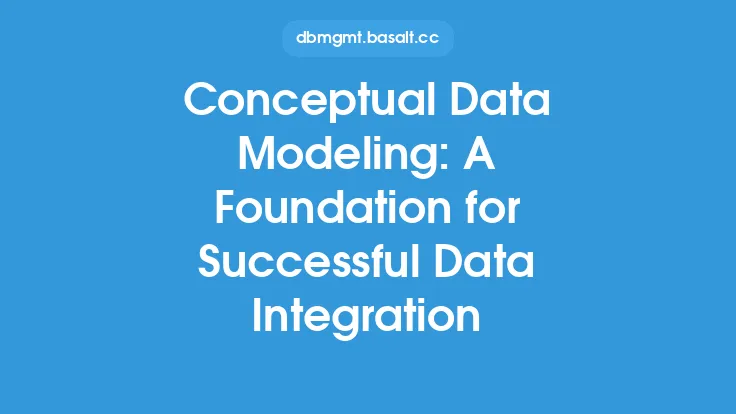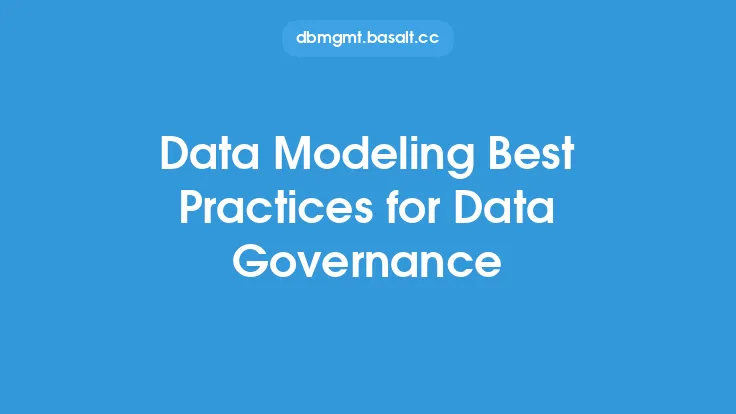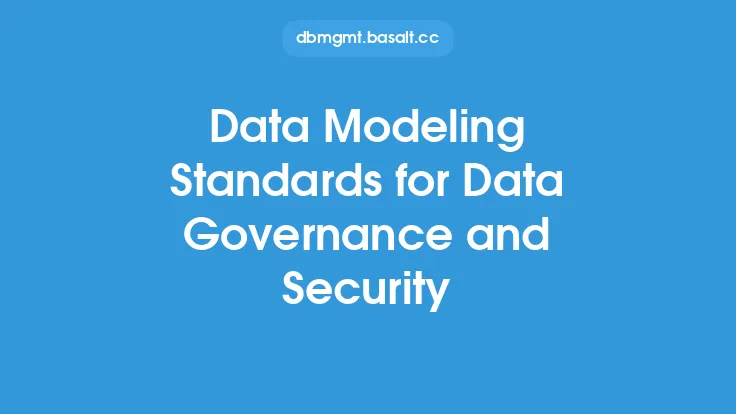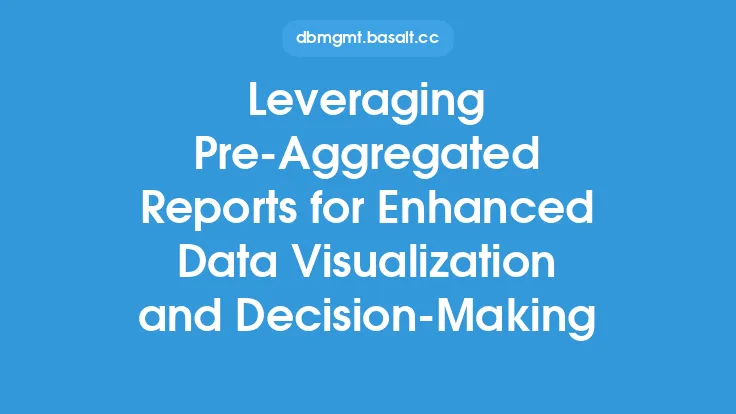In the realm of data management, effective governance is crucial for ensuring the accuracy, security, and reliability of an organization's data assets. One often overlooked yet vital component of data governance is conceptual data modeling. By leveraging conceptual data modeling, organizations can establish a robust framework for managing their data, thereby improving overall data governance. This approach enables businesses to create a unified, enterprise-wide view of their data, facilitating better decision-making, enhanced data quality, and improved compliance with regulatory requirements.
Introduction to Conceptual Data Modeling for Data Governance
Conceptual data modeling is a high-level, abstract representation of an organization's data assets, focusing on the key concepts, relationships, and rules that govern the data. This type of modeling is not concerned with the physical implementation details but rather provides a logical, business-oriented view of the data. By using conceptual data modeling for data governance, organizations can define a common language and understanding of their data across different departments and stakeholders, reducing misunderstandings and misinterpretations.
Benefits of Conceptual Data Modeling in Data Governance
The benefits of conceptual data modeling in data governance are multifaceted. Firstly, it enables organizations to develop a comprehensive understanding of their data landscape, including the relationships between different data entities and the business rules that apply to them. This understanding is essential for implementing effective data governance policies and procedures. Secondly, conceptual data modeling facilitates the identification of data inconsistencies, redundancies, and inaccuracies, allowing organizations to take corrective actions to improve data quality. Finally, by providing a unified view of the data, conceptual data modeling supports better decision-making, as stakeholders can rely on a single, authoritative source of truth for their data needs.
Implementing Conceptual Data Modeling for Improved Data Governance
Implementing conceptual data modeling for improved data governance involves several key steps. Firstly, organizations must identify the scope of their conceptual data model, determining which data entities and relationships are to be included. Next, they must gather and analyze business requirements, engaging with stakeholders to understand the key concepts, rules, and relationships that govern the data. This information is then used to create the conceptual data model, which should be represented in a clear, concise, and easily understandable format, such as an entity-relationship diagram (ERD). Finally, the conceptual data model must be maintained and updated regularly to reflect changes in the business or data landscape.
Tools and Techniques for Conceptual Data Modeling
Several tools and techniques are available to support conceptual data modeling, including data modeling software, entity-relationship modeling, and object-role modeling. Data modeling software, such as Entity-Relationship Diagram (ERD) tools, provides a graphical interface for creating and editing conceptual data models. Entity-relationship modeling is a technique used to represent the relationships between data entities, while object-role modeling is a more advanced approach that focuses on the roles played by data entities in different contexts. The choice of tool or technique will depend on the specific needs and requirements of the organization, as well as the complexity of the data landscape.
Best Practices for Conceptual Data Modeling in Data Governance
To ensure the success of conceptual data modeling in data governance, several best practices should be followed. Firstly, organizations should adopt a business-oriented approach, focusing on the key concepts and relationships that are relevant to the business. Secondly, they should engage with stakeholders to ensure that the conceptual data model accurately reflects the business requirements and rules. Thirdly, the conceptual data model should be regularly reviewed and updated to reflect changes in the business or data landscape. Finally, organizations should consider using data modeling software or other tools to support the creation and maintenance of the conceptual data model, ensuring that it remains accurate, up-to-date, and easily accessible to stakeholders.
Challenges and Limitations of Conceptual Data Modeling
While conceptual data modeling offers numerous benefits for data governance, there are also several challenges and limitations to consider. One of the main challenges is the complexity of the data landscape, which can make it difficult to create a comprehensive and accurate conceptual data model. Additionally, conceptual data modeling requires significant stakeholder engagement, which can be time-consuming and resource-intensive. Furthermore, the conceptual data model must be regularly maintained and updated, which can be a challenge in dynamic business environments. Finally, conceptual data modeling may not be suitable for all types of data or organizations, particularly those with simple data landscapes or limited resources.
Future Directions for Conceptual Data Modeling in Data Governance
As data governance continues to evolve, conceptual data modeling is likely to play an increasingly important role. One potential future direction is the integration of conceptual data modeling with other data governance disciplines, such as data quality and metadata management. This integration could enable organizations to create a more comprehensive and unified view of their data, supporting better decision-making and improved data governance. Another potential future direction is the use of artificial intelligence (AI) and machine learning (ML) to support conceptual data modeling, automating tasks such as data discovery and model maintenance. Finally, the increasing adoption of cloud-based data platforms and big data technologies is likely to drive the development of new conceptual data modeling tools and techniques, supporting more agile and flexible data governance practices.
Conclusion
In conclusion, conceptual data modeling is a powerful tool for improving data governance, enabling organizations to create a unified, enterprise-wide view of their data and establish a robust framework for managing their data assets. By leveraging conceptual data modeling, organizations can improve data quality, reduce data inconsistencies, and support better decision-making. While there are challenges and limitations to consider, the benefits of conceptual data modeling make it an essential component of any data governance strategy. As data governance continues to evolve, conceptual data modeling is likely to play an increasingly important role, driving the development of new tools, techniques, and best practices for managing and governing data assets.





